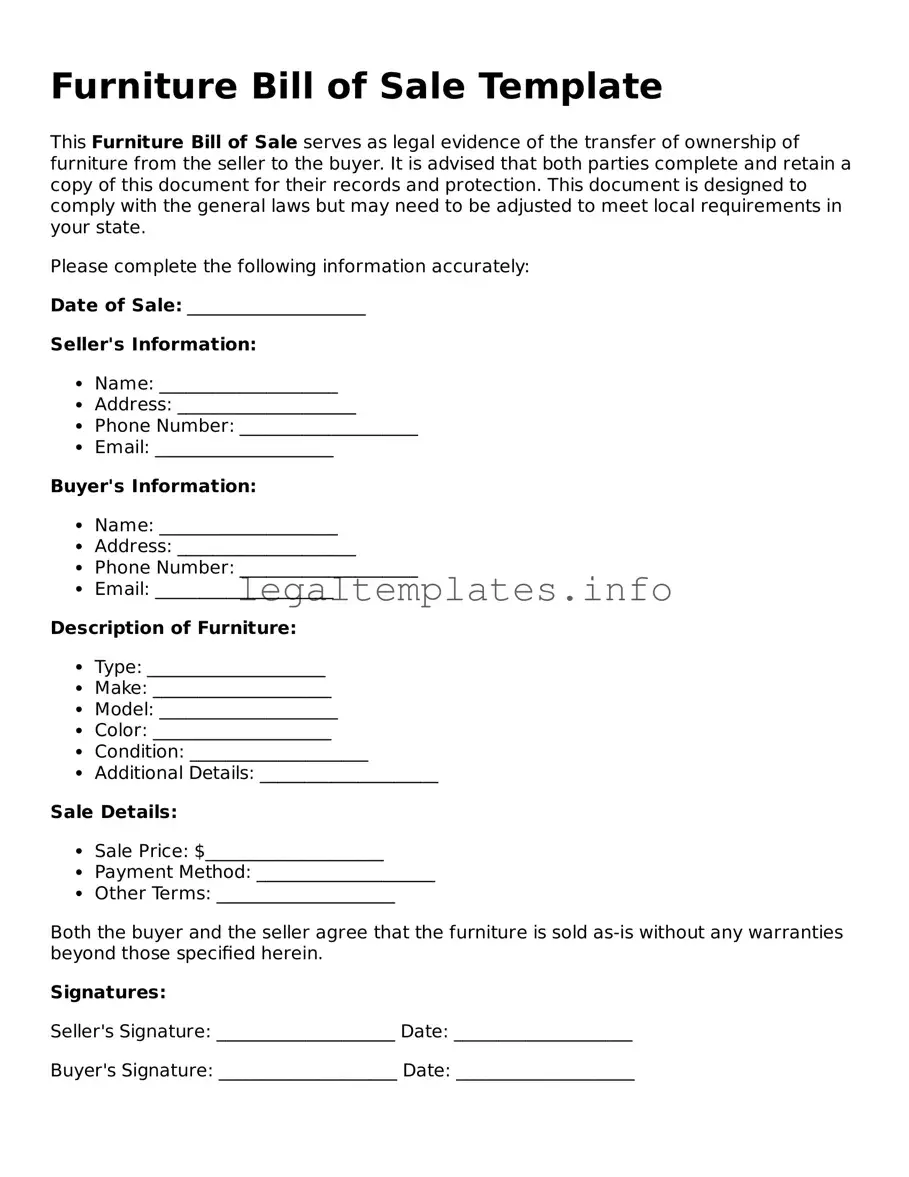The Furniture Bill of Sale form shares similarities with the Vehicle Bill of Sale, both serving as pivotal documents in the exchange of ownership. Like vehicles, furniture purchases, particularly those of significant value or from a secondary market, often require proof of transaction to safeguard both buyer and seller. This document outlines the item's condition, sale price, and parties involved, ensuring a clear transfer of ownership, just as its vehicular counterpart provides a legal record specifying details like make, model, year, and VIN for vehicles.
Much like the Furniture Bill of Sale, a Real Estate Bill of Sale is utilized in transactions where property changes hands. Although furniture and real estate differ vastly in nature - one being movable and the other fixed - both forms serve to record the details of the transaction and transfer ownership. The Real Estate Bill of Sale captures essential information about the property, sale amount, and parties’ agreement, paralleling the furniture document’s role in delineating the specifics of a sale.
Equally, the Equipment Bill of Sale bears resemblance to the Furniture Bill of Sale. It is common in the sale of machinery or large equipment, detailing the item's identification, condition, purchase price, and the identities of the buyer and seller. This mutual function—to document the sale and transfer of significant, often high-value items—links the two, though the merchandise in question spans different categories.
The Business Bill of Sale and the Furniture Bill of Sale are akin in their function of transferring ownership rights. Whether selling a single piece of furniture or an entire business, these documents are crucial in detailing the transaction specifics—highlighting the sale amount, a description of the item or business being sold, and legal agreements between buyer and seller, thus facilitating a smooth transition of assets.
Similarly, the Artwork Bill of Sale is used for transactions involving valuable pieces of art, resembling the Furniture Bill of Sale in essence. Both documents protect the interests of the buyer and seller by recording the transaction's specifics, including a detailed description of the item, the sale price, and the parties' agreement, ensuring the artwork or furniture piece’s provenance and legality of the sale.
In the realm of personal transactions, a General Bill of Sale documents the sale of various items, including furniture, making it a broad counterpart to the more specific Furniture Bill of Sale. This form accommodates the transfer of ownership for a range of items, detailed with descriptions and conditions of the sale items, paralleling the furniture-specific bill's role in personal property transactions.
The Boat Bill of Sale, while seemingly unrelated, shares core similarities with the Furniture Bill of Sale, owing to its role in documenting the sale and transfer of ownership of a boat. Both are indispensable in providing a legal record that details the item’s description, sale price, and the agreement between buyer and seller, tailored to their respective items but fulfilling the same legal documentation requirement.
The Gun Bill of Sale is another document similar to the Furniture Bill of Sale, despite the stark difference in the nature of items being sold. Both forms are essential for recording the sale of items that require clear documentation for ownership transfer, including detailed descriptions, the sale price, and the identities of the parties involved, ensuring legal compliance and protection for both parties.
Lastly, the Livestock Bill of Sale parallels the Furniture Bill of Sale in function and necessity, despite the difference in what’s being sold. It is crucial in the context of buying and selling livestock, capturing the details of the transaction, such as the type and condition of the animal, sale price, and buyer and seller information, akin to how furniture sales are documented to ensure clear title transfer.
